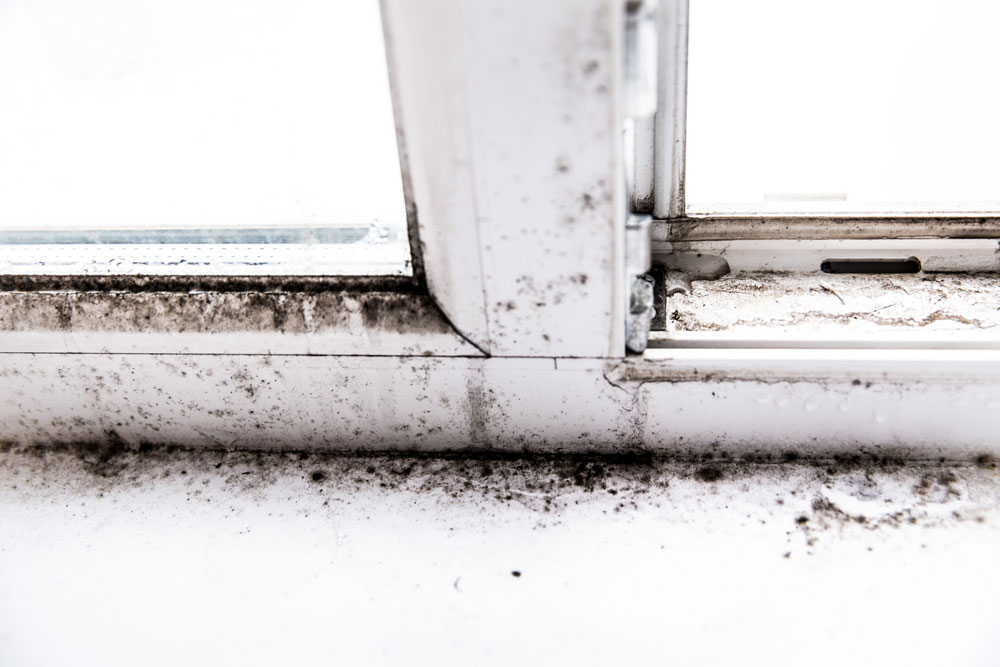How To Remove Mould From Window Sill
 CONTENTS
CONTENTS
- Why does mould grow on window sills?
- What are the effects of mould growth?
- How to get rid of mould on window sills
- The best ways to prevent mould
- Contact us today
Mould is a common feature on window sills as it provides it with the perfect conditions for growth. You must have it removed as soon as you spot it or it could damage your window sill, spread around the rest of your home, and put people’s health at risk.
Here at ICE Cleaning, we offer long-lasting mould removal services. Our technicians have been qualified by Dewpoint Professional and can eliminate every trace of mould in your home. We have specialist cleaners stationed across the UK and they can be on site within hours in an emergency.
Read on to find out why mould grows on window sills and how to get rid of it.
Why does mould grow on window sills?
Mould spores are always floating in the air in your property. When they settle on surfaces that provide them with the conditions they need, like moisture, they start to grow.
As window sills tend to get very damp, mould is very prone to growing on them. This dampness is caused by condensation forming on windows and the water droplets dripping down onto the window sill.
Condensation is caused by warm, humid air coming in contact with the cold windowpane and the water vapour in it condensing. You can learn more about how condensation forms here.
Window sills can also provide mould with the organic material it needs to feed off, including dirt, dust, dead bugs, and – depending on what they are made from – wood.
There are lots of other reasons why mould could be growing on your window sill, including:
- Leaky pipes and guttering is allowing water into your home
- Poor ventilation in your property is trapping moist air
- Rising damp
What are the effects of mould growth?
Mould can have a number of impacts on your property. Firstly, the unsightly dark spots and stains can affect its appearance, particularly when they form in very visible areas, like on the window. It can also produce an unpleasant musty and stale odour.
Mould can damage property and possessions made of organic material, too, like wooden furniture or certain fabrics.
More importantly, perhaps, mould can affect people’s health. The fungus produces allergens and irritants, and on occasion, toxic substances. When you inhale or touch the spores, you could experience an allergic reaction, like a runny nose, coughing, or a skin rash.
People with pre-existing health conditions are more vulnerable to mould exposure, for example, if you have asthma, it could trigger asthma attacks. You can find out more about the dangers of mould here.
One of the most common types of mould spotted on window sills is black mould. Some kinds of black mould can produce mycotoxins which, when ingested or inhaled, can lead to problems with your skin, vision, reproductive system, circulatory system, and respiratory system.
To keep yourself and others safe, and minimise damage to your home, you must have mould removed immediately.
How to get rid of mould on window sills
Although there are plenty of mould cleaning hacks online ranging from scrubbing it with baking soda to spraying the area with vinegar, you should always bring in professionals for mould remediation.
They will have the specialist cleaning products and equipment required for thorough and effective mould removal, and can and give you peace of mind that the problem is solved for good.
Specialist cleaners, like ICE Cleaning’s technicians, can also diagnose what it is causing the mould and advise on how to prevent it in the future so you can keep your home clean.
They will have the personal protective equipment (PPE) and training to safely remove the mould, too. Trying to clean it yourself will bring you in close contact with the mould so you could be more likely to touch or inhale the spores.
The best ways to prevent mould
After the mould is removed from your window sill, there are lots of things you can do to stop it returning.
- Wipe condensation off windows and window sills regularly
- Open windows in the morning and frequently throughout the day to ventilate the property
- Purchase a dehumidifier to keep humidity levels below 50%
- Have any leaks fixed
- Clean the windows to get rid of any dust, dirt, and dead bugs
You can learn more about all the different ways to prevent mould growing on your windows in this blog.
Contact us today
Our 9-stage mould removal process can quickly restore your property to a clean, safe condition. Every mould remediation service comes with a lifetime guarantee* so you can be sure your home will stay mould-free.
Get in touch with our team on 0208 066 0360 or at enquiries@icecleaning.co.uk to find out more and get a free, no-obligation quote.
*subject to advisories

Speak with me today,
I’m here to help
By asking you a few questions either via phone or email I can immediately provide a realistic estimation of the cost.
You’re in good company. We’ve cleaned for the following commercial clients… View all

Why choose us?
- Cater to a wide variety of cleaning situations
- Nationwide coverage, available 24/7
- Cater to commercial and domestic clients
- Free survey provided prior to quotation
- Emergency response team
- Offer a bespoke service designed to suit all your needs
- All technicians hold professional health and safety qualifications, including BICSc, IOSH, Dewpoint Professional & Safe Contractor
We’re fully accredited
We place best practise, professional expertise and health and safety at the core of our business. We’re fully compliant with all legal obligations. You can view a list of our accreditations below, or visit our Health & Safety page for more information.











-RGB-small.1707319151.jpg)




















